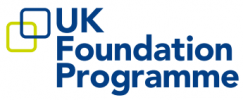Through a glass darkly, but then face-to-face: Parkinson’s post-pandemic
SURFACE TENSION
Parkinson’s is a clinical diagnosis. There are no blood tests, or signs on a scan which can conclusively prove or disprove its existence. Compared to the glittering clarity of the unmistakable CT scan, a full neurological examination can seem to the uninitiated like an outdated relic from the mysterious past.
It takes great care to do it well.
Sometimes it feels more like a ritual: a master guiding the sufferer though a series of symbolic, ageless postures, and sifting the results through an incomprehensible arcane language of nerve root values.
Dropping the toothbrush for a third time in a week had been the final straw she had been unable to rationalise, and which had begun the process of referral. Until then, it had happened in the way that it normally does. There was what it probably was – what it could also be – and then the unnameable. She had probably been sleeping badly on her stiff, painful shoulder. Her work was stressful, and she needed to relax more.
Her first doctor had been young, thorough and promised to do their best. That had been 16 weeks ago. Tony’s wife had been waiting for nearly twice as long for a double hip replacement, and had needed to leave her job because of the pain. Her son had told her more than once to see someone privately, but before she could, her hospital phoned to tell her that her appointment was now at the local Spire – and could she go tomorrow?
Her hospital consultant explained afterwards that her shoulder MRI showed no significant changes. The words on the letter to her GP, a copy of which was hers to keep:
‘I would have liked to examine the shoulder, but given the telephone nature it was not possible.’
A DRIFT
There’s nothing to write anymore.
A steady hum of grocery delivery slots bring him his food and is largely coordinated by machines, without generating the usual confetti of receipts or shopping lists. The week before last, he asked a website to send his granddaughter a birthday card. It is the longest he has ever gone without using his hands to work. These hands, which had frenzied across the harmonica and entertained on cruise ships from Honduras to Korčula. In 1976, they had built a house. Later, a child was born, delivered at home. They have done so much, and the contours of each eminence or fold are intimately familiar.
Looking across his living room, you can see how it once was: A woman’s jewellery box, and the souvenir from Dubrovnik on the mantlepiece. That photograph. A younger man, vibrant and powerful, stood on the lido deck of a ship and looking out to sea.
Statistics whirl around our lives like a cyclone. Tangles or plaques form throughout the body, and free radicals collide. When the stars are right, a deadly landslide kills 3 in Indonesia. An aneurysm grows silently in the dark. Everybody agrees that there’s nothing anybody could have done. It just happens in some people, we will say. We don’t know why.
He looks forward to hearing from his daughter once a week. After the initial novelty of Zoom catch-ups wore off, it had made more sense to try to stick to a telephone call every Wednesday after the grandkids had been put to bed. Between the artefacts and lag from the straining broadband, they often found it difficult to read each other online. His daughter, in fact, had mentioned once or twice that she couldn’t always make out the expressions in her father’s digital, staring face.
Sometimes, entire days pass without him speaking. As the faces which were once regular stop being regular, and recede into time or distance. As the allotment and the ceramic studio have to remain temporarily closed, like anything else. His booking reference number for his COVID booster vaccine is the first thing he’s written in months. The world is already so small, and now the words are getting smaller.
BUT A MOVEMENT OF LIMBS
It happened midstride, around 600 metres into her usual route. Her body now lay on the pavement, propped up and furious against the Church steps, taking wracking hungry breaths. There had been weeks of this: chest pain and shortness-of-breath on exertion. It was the distant relative of a feeling she had come to know, but as the panting victory at the marathon’s end. Some people never seemed to recover after catching the virus, and no one knew why. By the end of the 2024 Summer Olympics, she was sure that her body was strong and whole. Every week her distance had improved, and she could now run comfortably for nine kilometres without tiring. The plummeting of her running speed overnight is the first sign that something new is horribly wrong. Then, her left arm wouldn’t swing the way that it used to. She has never felt anything like this before, and is terrified of going back to hospital. The training for the half-marathon ends quietly and abruptly. The new movements in her fingers are just nerves. Then there come the secret, late-night internet searches. An early childhood memory of her uncle, his constant movements in small jerks and rolls, and how they frightened her. She could have been no older than four. In the back of his mind, her husband suspects it too, and it becomes something of an open secret between them both. Many marriages have them. It lives underneath the floorboards of their house, with the other half-formed and nameless things. One day he caught her staring, by the windowsill. Feeling suddenly that it is important to say something – anything – he asks without understanding why: ‘Did you get the milk?’
Dr Caed Whittle
F2, Trent Foundation School
All previous HOFP articles can be found on our HOFP webpage
